Add navigation frames
 |
Pulse jet |
|
Add navigation frames |
|
|
||
What is a pulsejet?
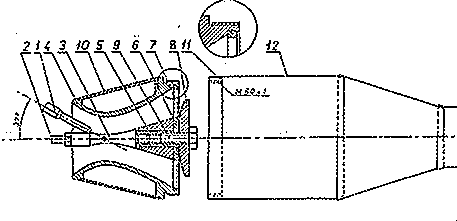
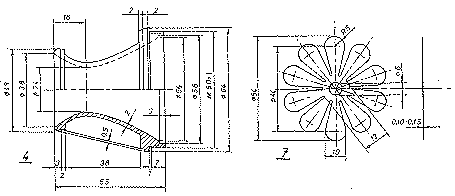
The Quaedvlieg pulse
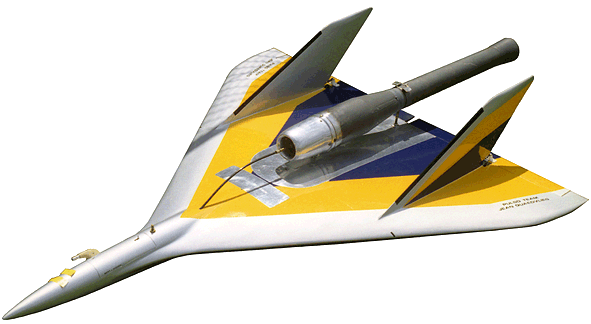
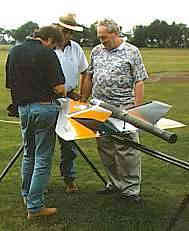
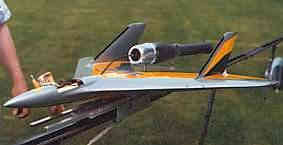 At the 1998 airshow of Apollo 68 in Horst, I met Jean Quaedvlieg (Quaedvlieg Technologie) who has been building pulsejets for almost 25 years.
At the 1998 airshow of Apollo 68 in Horst, I met Jean Quaedvlieg (Quaedvlieg Technologie) who has been building pulsejets for almost 25 years.
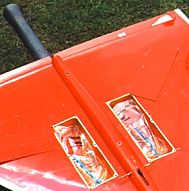 Two plasmabags with fuel enable a just over 3 minutes flight.
Two plasmabags with fuel enable a just over 3 minutes flight.
The AMT pulse delta

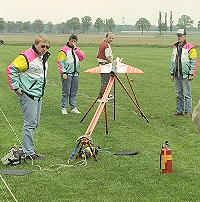
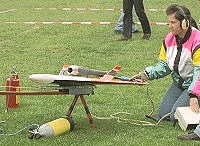 Mounted in a KB70 Delta, it gives the plane a speed of 390 to 445 kilometers per hour, depending on temperature and air pressure. Very spectacular to see, if flown by an expert like Bennie van de Goor.
Two 1 liter hospital plasma bags are used as fuel tanks, mounted in the wings.
The max. measured speed of the KB70 is 431 kilometers per hour. The thrust of the engine is 90N.
Mounted in a KB70 Delta, it gives the plane a speed of 390 to 445 kilometers per hour, depending on temperature and air pressure. Very spectacular to see, if flown by an expert like Bennie van de Goor.
Two 1 liter hospital plasma bags are used as fuel tanks, mounted in the wings.
The max. measured speed of the KB70 is 431 kilometers per hour. The thrust of the engine is 90N.
A disadvantage of this type of engine is the sound production, so in The Netherlands it may only occasionally be flown in model air shows.
The left-side photo shows how the KB-70 gets launched, while the right-side photo shows how the engine gets started.
Both the engine and the plane are not for sale, but the good news is:
Autocad drawing file for both KB-70 and pulsejet downloadable from AMT pulsejet Page
Some technical info on the KB-70 and the used pulse jet engine, just in Dutch as I got it from Bennie van de Goor:
A few terms translated: spanwijdte (wingspan), brandstoftank (fuel tank), vluchtduur (duration of flight)
| spanwijdte | 112 cm |
| lengte incl motor | 175 cm |
| leeg gewicht | 5.9 Kg |
| vleugel profiel | 10 % dikte eigen ontwerp |
| materiaal vleugel | tempex ingedekt met glasmat 80 gr + koolstof geteste vleugelbelasting 20 G |
| brandstoftank | 2 x 1 liter (75 % vulling) weegt 1200 gram |
| vluchtduur | 3 minuten |
| snelheid | afhankelijk van luchtdruk en temperatuur 390- 445 KM/h |
| motor | eigen ontwerp pulse jet 90 mm rond 880 mm lang |
| stuwdruk | 85 N |
| brandstof | 47 % kerosine JP-4 38 % wasbenzine 10 % kookpunt benzine 5% propyleen oxide C3-H6-O |
| branstofverbruik | 500 cc per/min |
Richard Caine/Bailey Machine Service
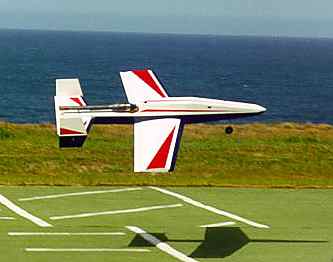 Richard Caine provided me with some other info on pulse jets. He has drawings of about 15 pulsejet engines. Only hardcopies.
The pictures you see at the top of this page come from Richard and are for the brauner pulsejet which has been successfully home built by a
number of people over the years.
Richard Caine provided me with some other info on pulse jets. He has drawings of about 15 pulsejet engines. Only hardcopies.
The pictures you see at the top of this page come from Richard and are for the brauner pulsejet which has been successfully home built by a
number of people over the years.
He also gave me the address of BMS who produce commercial pulsejets for models. You have to order direct from the manufacturer. If you want to talk to someone there, Earl Bailey is the man to talk to. He has a great knowledge of pulsejets.
As far as I do know BMS does not have a homepage.

Bailey Machine Service 633W Parker Road Houston Texas 77091 USA Telephone:- 713 6947017
Ordering pulsejet plans
VTH (Verlag für Technik und Handwerk GmbH , Germany) still has some plans available for pulse jet engines. To order these plans you have to visit the VTH site (will open in new window). The site is in German language only.The good old Icarus pulse
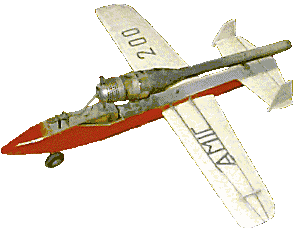 At my club (Icarus) I found a control line plane equipped with a homebuilt pulsejet.Nobody could tell me who has built the plane and the engine, but it must have it's origin in the late 60's. It's a 68 cm wingspan model with a 48cm pulse jet engine, covered with the dust of almost 30 years. For the photo it was cleaned a bit.
At my club (Icarus) I found a control line plane equipped with a homebuilt pulsejet.Nobody could tell me who has built the plane and the engine, but it must have it's origin in the late 60's. It's a 68 cm wingspan model with a 48cm pulse jet engine, covered with the dust of almost 30 years. For the photo it was cleaned a bit.
Last but not least
If you are interested in more plans etc., visit Kenneth Møller 's pages. You'll find a link on the Airtoi linkpages under European links, Denmark and under Jet related links.
© 2000, 2001 Toine Martens